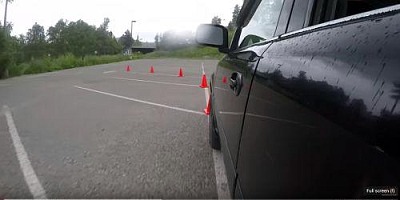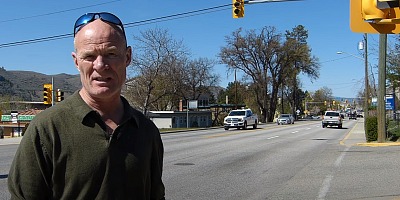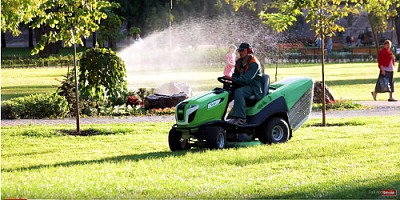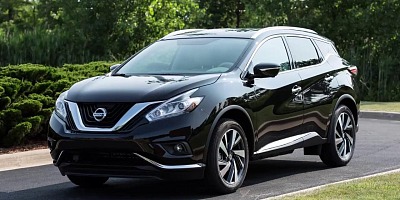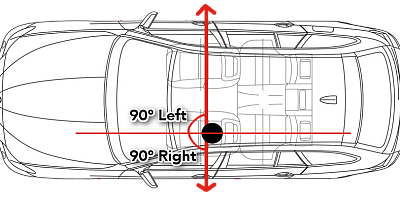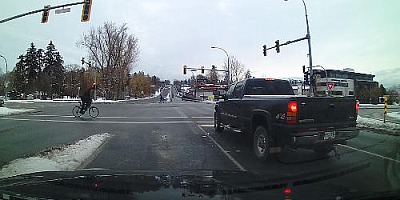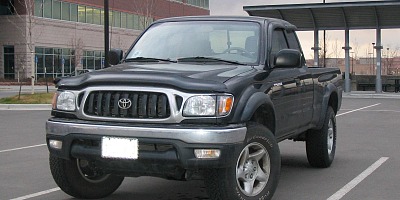Driving a car for beginners starts here with the basics.
https://www.youtube.com/embed/dJpMKkwEhxI
How to Learn to Drive a Car to Pass Your Road Test First Try
Closed Caption
Introduction
Hi there smart drivers, Rick with Smart Drive Test talking to you today about slow-speed maneuvers and learning how to drive faster.
I had a comment from Areej and she wanted me to give us more information about slow-speed maneuvers.
Now the slow-speed maneuvers can be broken down into three categories:
the first one is learning how to use the primary controls of the vehicle.
And you're not going to have any markers in the parking lot or the closed-circuit area where you're learning how to drive to use the primary controls.
You're just gonna drive around the parking lot and get used to the primary controls, which are the steering wheel, the brake, the throttle, and if you're driving a manual transmission, the clutch.
The second part is speed and space management.
You're going to get some pylons and you're going to get a piece of two by four and we're going to show you today some techniques that you can do in the parking lot - specific exercises that will help you to manage speed of the vehicle and space of the vehicle.
And the last category is the specific slow-speed maneuvers that you need to do for a road test, which include parallel parking, three-point turn, two-point reverse turn, etc., etc.
| Don't Fail Your Road Test…buy course! | |
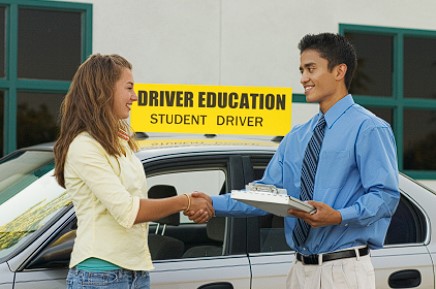
A course for new drivers working towards their first license. This self-paced course gives you:
|
GUARANTEED TO PASS FIRST TIME OR WE'LL REFUND YOUR MONEY
j2store}9|cart/j2store}
There aren't a whole lot of slow- speed maneuvers, but I will tell you that 7/8s of the road test is in a forward motion, 1/8th is slow-speed maneuvers, but unfortunately it's that 1/8th of the road test that give new drivers the most difficulty.
So we're going to spend some time telling you what the slow speed manoeuvres are for the purposes of the road test, and give you some more information.
And the last point that I'll make here in the introduction is that you need to spend some time on these slow-speed maneuvers because this practice is going to improve your overall driving! So stick around, we'll be right back with that information.
[OPENING CREDITS & MUSIC]
Prologue
Hi there smart drivers.
Rick with Smart Drive Test talking to you today about slow-speed maneuvers for the purposes of learning how to drive and preparing for a road test.
Yes, going out and doing slow-speed maneuvers is not sexy, it's not even fun in the greatest to stretch of the imagination.
But it is a necessity for you to learn how to drive and prepare for a road test.
And if you spend time in the parking lot doing slow-speed maneuvers, you're going to learn how to drive faster.
You're going to be a better driver overall, and you're going to be better prepared for your road test.
So spend time doing slow-speed maneuvers.
It's like any skill that you're going to learn: there are fundamentals and the slow-speed maneuvers are the fundamentals.
Now the other thing that I'll say, seven-eighths of your road test is in a forward motion; 1/8 is only slow- speed maneuvers, but for most new drivers it's that one eighth--the slow-speed maneuvers--that gives them the most challenges.
So if you spend the time in the parking lot, you're going to be better prepared for your road test.
Now slow-speed maneuvers in the parking lot can be broken down into three categories:
#1 - Primary Controls
- the steering wheel;
- the clutch;
- the brake;
- and the throttle.
Clutch if you're driving a manual transmission.
Otherwise for most of you driving an automatic transmission, the clutch is not going to be one of your primary controls.
#2 - Speed & Space Management
The next category for slow-speed maneuvers is speed and space management.
You have to learn how to control the speed of the vehicle with the throttle and the brake.
And as well, you need to have space management as well, and you're going to need some pylons for that.
If you go out and rent some of those meter tall pylons from your local shop-- you only need four of them--and you can rent it for less than ten bucks for a day.
Get four of those and take those out to the parking lot and they'll really help you.
Now the other thing for speed and space management is you need an 8' foot two-by-four.
And I'll leave the metric measurements down in the description there for you (2.4m X 5.08cm X 10.16cm)
But you can pick up a eight-foot two-by-four down to your local lumber shop for less than a couple of bucks.
So just go and get one of those and those two will help you out and I'll show you here in the rest of the video the techniques for driving around pylon and what you can do with the two-by-four to learn speed and space management around your vehicle.
#3 - Specific Slow-Speed Manoeuvres
And the last category for learning the specific slow-speed maneuvers is that you need to know for the purposes of your road test:
- three-point turn;
- parallel parking;
- two-point reverse turns;
- reverse stall parking;
- and curb parking.
Those are the specific slow-speed maneuvers that you need to know for the purposes of a road test.
And like I said, those make up a small part of the road test, but that small part of the road test is often the biggest grief for new drivers taking a road test.
So the first part of slow-speed maneuvers is getting used to the primary controls and how the primary controls response.
For those are you driving automatics, it will be the throttle, the brake and the steering wheel.
Steering Wheel
It's like a 5th Wheel, but with a purpose!
Now when you go out to the parking lot, turn the steering wheel in either direction to learn how far the steering wheel goes.
On most passenger vehicle's it's going to turn one-and-a-half revolutions to the left and to the right.
And just bring it back one-and-a-half revolutions when the logo is straight across the steering wheel you know that your steer tires are straight.
And if you don't know that the steer tires are straight because you didn't keep track of steering wheel, the other way you can do it is just inch forward a couple of inches and you'll know very quickly whether the wheels on the vehicle are straight or not.
The other thing you want to do, is you want to drive straight up and down the parking lot and brake.
Braking
It's the pedal in the middle!
And brake aggressively and get used to the response of the brake.
Now as well, most vehicles in this day and age are equipped with ABS brakes--anti-lock brakes.
As well you want to go down the parking lot fast enough and make a hard, hard brake application to engage the ABS so you know what the ABS feels like in the event that you get into an emergency situation and you have to brake hard.
And as well, I'll leave a card up here for you in the corner on braking with ABS brakes and knowing how those operate.
And what you have to do in order to get them to work for you.
And the purposes of ABS brakes is so that you maintain steering in the event of an emergency.
Because when the wheels lock up - a spinning or locked up wheel is always going to lead.
You don't want to steer tires to lock up in an emergency situation.
As well, with primary controls your are going to drive around in circles and you're going to get used to how sharp the vehicle steers.
So straight line back and forth.
You're going to get used to straight line backing.
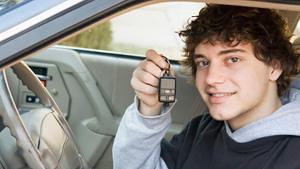
LEARN THE SECRETS THAT DRIVING SCHOOLS DON'T TELL YOU!
• FEAR :: Know that you WON'T have to face friends & family and tell them you didn't pass;
• SELF-CONFIDENCE :: Get the exact skills from a licensed driving instructor that will guarantee your success;
• CONFUSION :: Cut through the conflicting driving procedures information;
• QUALIFIED :: Smart Drive Test has helped 1000s pass their driver's test...and we can help you!
Straight Line Backing
This isn't straight at all - I have to keep moving the steering wheel!
As well, because one of the other techniques that will improve your overall driving is straight line backing and backing in circles.
So do that as well to get used to the primary controls and how the steering feels and the throttle feels when the vehicle is in reverse, because it feels very, very different.
And when you're reversing in your car, put your right hand over the back the passenger seat.
If you're on the other side of the road in Australia or UK, you can put your left hand on the back of the passenger seat and you're going to look out the back window of the vehicle.
So essentially what you're doing is getting used to the primary controls: the throttle, the brake, and the steering wheel.
Manual Transmission
Why do I have to change the stupid gears?
And for those driving a manual transmission, you're going to get used to the clutch as well.
And you're going to learn clutch control, because those of you driving a manual transmission, if you can learn clutch control that is the fundamental to learning how to drive a standard transmission.
Essentially in this day and age of electronic fuel injection engines, if you're on a flat surface in the parking lot you just want to bring the clutch out to the friction point and then control it out the rest of the way and get the vehicle moving forward.
And the friction point on the clutch is when the two clutch plates come together and the vehicle begins to move forward.
That is the friction point.
And you essentially have to control that clutch to bring it out the rest of the way so that the engine won't stall.
And you don't need to give it any throttle, just work on that clutch control.
So that the other primary control that you need to do for the purposes of learning how to drive.
Specific Slow-Speed Manoeuvres
Driving Tests Are Dumb!
The next category for slow-speed maneuvers is speed and space management.
And this is where your pylons are going to come into use here.
And as well, the two-by-four, but don't use the two-by-four right away.
We're going to use the pylons.
And essentially what you're going to do is put the pylons in the configuration that you see here in the image and that is going to give you essentially a T-intersection.
And you're going to be able to drive up and down on both sides of the pylon in a straight line - both on the passenger side of the vehicle and on the driver's side of the vehicle.
And that is going to give you some speed and space management.
And as well, you're going to get some familiarity with the blind spots around the vehicle.
As you can see here in the image, there are significant blind spots both to the rear of the vehicle and on the passenger side of the vehicle.
Those are your two biggest blind spots.
And you need to figure out spatial relationships around your vehicle and figure out how close you can get to those pylons.
Because if you can't get close to a 36 inch pilot that you can in fact see from the driver's seat on the passenger side, it's going to be pretty tough to curb park.
So you need to get used to that.
So drive the vehicle on both sides of the pylon in a straight line: reversing and driving forward.
When you get comfortable with that, then you want to put a pylon in the center of the parking lot and you want to drive around in circles both clockwise and counter clockwise.
And when you get comfortable with all of that, the last exercise that you want to do in the parking lot is you want to do forward figure-eights.
When you get comfortable with that, then you want to do reverse figure eights.
And you essentially set up three pylons at a distance where you can do the figure-eight forward and in reverse.
And again, all of this will build on the primary control exercises that you were doing at the beginning of working in the parking lot.
And this will teach you speed and space management, it will teach you better control of the clutch, better control of the throttle, better control of the brake and the steering.
Forward & Reverse Figure '8s'
Why is there Math in Driving?
And you'll get used to that.
Now when you're doing your circles, and you're doing your figure '8s' in both in a forward motion and in a reverse motion, as you get better and better with that you can move the pylons closer and closer together.
The 2 X 4 Exercise
Are We Building a Deck?
Now the last exercise that you can do for speed in space management is take your 2X4--your 8-foot two-by-four--and put it down on the ground as you can see here in the image and drive over in a forward motion on the driver's side and on the passenger side.
And when you get comfortable with that and you can do that well and hit the two-by-four almost every time with the tires on your vehicle, then do it in reverse.
You can see here in the image when I tried it the first time with the two-by-four, I missed because I was looking out the back window.
I actually had to use my mirrors.
I'm very comfortable with using the mirrors on the vehicle and when I use the mirrors I could hit just about every time.
Driving Exercises for Beginners (Includes Ohio Maneuverability Test Measurements)

LEARN THE SECRETS THAT DRIVING SCHOOLS DON'T TELL YOU!
• FEAR :: Know that you WON'T be thrown into traffic without the correct abilities, skill, and knowledge;
• SELF-CONFIDENCE :: Get the exact skills and abilities that will guarantee success on road test day;
• CONFUSION :: Cut through the conflicting driving procedures information;
• QUALIFIED :: Smart Drive Test has helped 1000s of students learn to drive...and we can help you!
Reversing Using the Mirrors
So reversing with the vehicle, if you can get used to using the mirrors and getting comfortable with using the mirrors and hitting that two-by-four-- driving over the two-by-four, not hitting it--but driving over it with the vehicle's tires on both the driver's side and the passenger side - that is the pinnacle of speed and space management.
Because you will have a really good sense of where your vehicle is in space and spatial relationships to other things.
So if you can use the mirrors, that will advance your skills and make you better on a road test.
Because mirrors are an advanced skill for drivers operating passenger vehicles.
And then if you move up to a up commercial vehicle, you're definitely going to have to know how to use the mirrors.
So if you can use the mirrors to get the tires over the two-by-four, that's going to really help you out and improve your overall driving.
Slow-Speed Manoeuvres
And the last slow-speed maneuvers are the specific slow-speed maneuvers that you need to know for the purposes of a road test:
- parallel parking;
- two-point reverse turn;
- three-point turn;
- reverse stall parking;
- and curb parking.
And I will put the links to all of the videos for those maneuvers down in the description box here because YouTube only allows me five cards up here and I can't possibly put them all up for the cards.
Now I will put description down--links--in the description box, so look down there for the specific maneuvers and how to do parallel parking, how to do two-point reverse turn, three-point turn, curb parking and reverse stall parking, and 2 point reverse turn.
Now you can set up the pylons in the parking lot and you can practice that, especially your two-point reverse turn, your parallel parking, stall parking and whatnot.
All of that can be practiced in the parking lot, especially if the parking lot has parking stall lines in it.
You can use the parking stall lines in conjunction with the pylons to practice those specific slow-speed maneuver.
So do that as well.
And practice these and take the time and spend the time to do these because as I said , each category of practicing the slow- speed maneuvers, working with the primary controls, doing speed and space management, and then doing the specific slow-speed maneuvers that you need to do.
If you do all these in the parking lot, once you get out onto the roadway, it's going to be easy because you've already done it.
Now the last part that I'm going to say about specific slow-speed maneuvers is what Bruce Lee said in "Enter the Dragon" when the guy comes up and smashes the board.
He says, "board not hit back," which is very true in martial arts.
It's one thing to practice all of your punching and kicking when you're by yourself and solo.
But it's a completely different thing when somebody swinging at you and you're trying to do those maneuvers and techniques.
So it's the same thing in driving.
When you go out and start practicing your slow-speed maneuvers on a road where there's traffic and there's the pressure of social driving, it is a different exercise.
Because now you have to communicate and you have to observe with other traffic and other road users.
And that will create pressure and create anxiety and frustration.
So if you spend the time in the parking lot doing the slow-speed maneuvers; when you get onto the road and other road users are there, it's going to make it easier for you and it's going to reduce your stress level, and it's going to reduce the amount of anxiety.
So practice the slow-speed maneuvers in the parking lot before you go out and practice on the roadway.
Conclusion
Quick review of slow-speed maneuvers for the purposes of learning how to drive and preparing for a road test.
Spend the time in a parking lot, spend the time in a closed circuit area where there isn't much traffic doing the slow-speed maneuvers.
Start with the primary controls: the steering wheel, the clutch, the throttle, and the brake just driving straight lines backwards and forwards.
And then start driving in circles and get used to the primary controls on the vehicle.
When you get some familiarity with the primary controls and you know how they respond, you know how sharp the vehicle turns, you know how fast it comes to a stop, you know how fast it accelerates - all of that is going to make the next part of your learning how to drive and do slow-speed maneuvers easier.
The next part is speed and space management.
As I said, there's a link down here in the description.
You can go over and get a set up at my website for the 36-inch meter tall pylons that you can hire from a local shop for very little money - less than ten dollars for the day.
And also, you're going to need an 8-foot two-by-four and this will help you with speed and space management.
And get comfortable with the blind spots around your vehicle.
Once you get comfortable with the blind spots around the vehicle and you can move the vehicle through space and you can orientate spatial relationships around your vehicle, it's going to be easier to handle the vehicle in traffic and center it in the lane.
And it's going to translate into all of your driving and make you a safer, smarter driver faster.
The last part, as I said, is the specific slow-speed maneuvers that you need to know for the purposes of a road test: three-point turn, parallel park, two-point reverse turn, reverse stall parking, and curb parking.
These are all slow-speed maneuvers that you must know for the purposes of a road test and are fair game.
And an examiner can ask to do any one of the slow-speed maneuvers.
And as I said previously in the video: seven-eighths of the road test in a forward motion 1/8th is slow-speed maneuvers.
But for most new drivers, it's that 1/8 that is going to give you the most grief, especially if you neglect that and just drive around in the city [CHUCKLING]...
when the examiner asks you to do slow-speed maneuvers, it's really going to be a tell tale sign whether you've done your homework or not in preparation for preparing for the road test.
So practice the slow-speed maneuvers, go to the parking lot and do that.
Question for my smart drivers:
Do you have any tips for new drivers to learn how to control the vehicle better and to learn how to drive more efficiently and be a better quality drivers?
Leave a comment down in the comment section there - all that helps us out.
I'm Rick with Smart Drive Test.
Thanks for watching.
If you like what you see here, share, subscribe, leave a comment down in the comment section.
As well, hit that thumbs up button.
Check out all the videos here on the channel if you're working towards a license or starting a career as a truck or bus driver.
Lots of great information here.
As well, head over to the Smart Drive Test website, good information over there, and online courses that you can purchase.
Stick around to the end of the video, funny bit and links to the other videos and to my website.
Thank you for watching.
Good luck on your road test.
And remember, pick the best answer not necessarily the right answer.
Have a great day.
Bye now.
[BRUCE LEE] "Boards don't hit back!"

